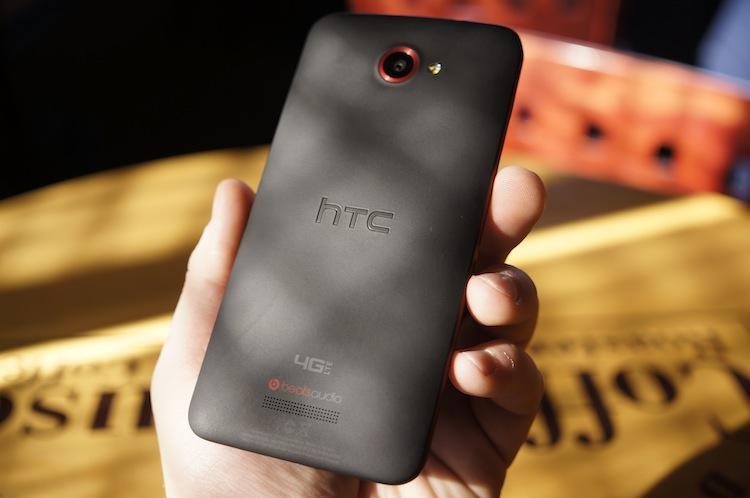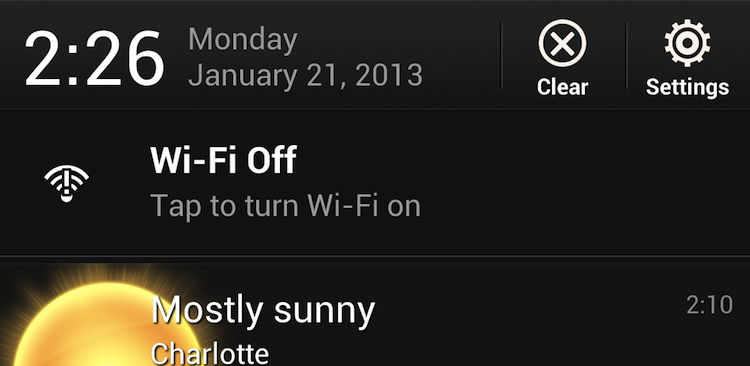
A lot can change in a week. When I woke up last Monday, I had content plans and ideas that I had full intentions of seeing through. And, well, things changed. Moving forward, I will no longer be PhoneDog's primary video guy and am back to tapping away at a keyboard, which is somewhat comforting. I am very comfortable writing day in and day out, and I was stressing each and every day about improving my video presence and becoming a noticeably better video guy.
I picked apart every video I made, critiquing all the minor details and making improvements to each daily iteration.
As you all may know by now, Aaron is back, and he's hitting the YouTube channel full force. And for now, I'm going to stick to what I know: writing.
I know you all may be thinking, "Taylor! What about your 30-day challenge with the DROID DNA?" I'm not quitting it cold turkey. But I am cutting it short. Instead of seeing the challenge all the way through, I will be writing a full review tomorrow and summarizing some of my thoughts after a week with the device below and in some later pieces. Without further ado …
I initially picked up the DROID DNA thinking that it would be a rather difficult challenge. Not only was I shelving the Verizon iPhone, I was also shelving my primary phone, the Samsung Galaxy Note II. I generally carry two phones daily because I like having options, I like being able to choose between iOS and Android on the fly. But I certainly don't need to carry two Android phones everywhere I go, especially not two of the largest smartphones on the market.
For the last week (with the exception of yesterday, when I grabbed my Galaxy Note II on the way out the door for my cousin to play with), I have been carrying a single smartphone, which I initially thought would be the crux of this so-called challenge.
I'm now on day eight and things are going quite well. I found that I actually really enjoy the DROID DNA. The build quality of the phone is fantastic, the display is gorgeous, LTE is great as usual, I have only experienced two performance hiccups and I have yet to run out of storage space. On the flip side, I have a few complaints that can't go unsaid.

First, the device itself. It feels absolutely great in the hand. The back is solid and just tacky enough to give the user peace of mind in knowing the phone won't slip through their digits to the perilous cement below. I love the red accents around the chassis – the trim around the camera, the speaker grill, the trim on the edges and the spun aluminum volume rocker and power button. And the way the glass is beveled, the front of the device melts away into the back.
This is a device I can use without a case, and I really adhere to devices like that. There have been many devices over the last year that I have felt are entirely too fragile to carry naked. The DROID DNA certainly does not fall into that category. The hardware is well put together and feels extremely sturdy. That said, I fear what would happen if I were to drop it. (I have that fear with basically every phone ever, though.)

The display is anything but a sore point with this phone. It's beautiful. I have loaded the DROID DNA down with movies and games. And it's amazing at displaying content. However, if the content is not optimized for the 1080p resolution, it's terribly noticeable.
Take wallpapers, for instance. When I first used the DROID DNA, the day it was announced in New York, I loaded one of my favorite wallpapers on the phone. It was that moment that I knew 1080p would be a problematic change for a while. The wallpaper, which looks great on my iPhone and Galaxy Note II looks absolutely terrible on the DROID DNA.

With all the streaming and uploading I do, my 2GB data plan doesn't last that long. So I always tend to connect to Wi-Fi when possible. With most phones, if you keep Wi-Fi enabled at all times, you will be notified when you are around accessible wireless networks.
The problem with the DROID DNA (and pretty much all Android phones on Verizon) is that there is a Wi-Fi notification in the notification shade at all times, whether you have Wi-Fi enabled or not. On top of that, there is a persistent pop-up that will appear intermittently when you open specific applications. The pop-up suggests various networks you can connect to.
Fortunately, the latter can be disabled in the Advanced section of Wi-Fi Settings. But I still don't appreciate constantly being told I should connect to Wi-Fi. Maybe Verizon should offer more logical and affordable data plans that can get even heavy users through a month without costing an arm and a leg.

I was concerned about the DROID DNA's stamina before I ever started the challenge. I have owned countless HTC smartphones over the last three years and I have struggled with battery life with every single one. In fact, the only smartphone I haven't struggled with is the Samsung Galaxy Note II.
I'll be honest. The battery life of the DROID DNA is a tad better than I expected. I charge it full last week and let it go until it completely died. I took it off the charger just before 8:00 AM. With light to moderate usage (maybe 30 minutes of streaming music via Spotify, about 10 emails, 300 text messages no more than 10 minutes of calls and a little Web browsing, the DROID DNA lasted 16 hours and nine minutes before powering down.
Had this been a day of heavy usage, 16 hours would be great. But the phone was on Wi-Fi at least 12 of those hours and was on standby for a vast majority of the day.
Ever since, I have struggled to last an entire day and have been forced to carry one of the many battery pack chargers I own to charge the DNA throughout the day.
Considering the HTC One X and ImageSense couldn't produce a stellar photo, I never imagined the DROID DNA could either. Given the right lighting, the DNA is capable of taking a great picture. Above is a perfect example of just that. (Click the image to enlarge.) But, in most scenarios, this camera's output is not even in the same category as the Galaxy S III or iPhone 5.
Exposure and auto-focus are extremely difficult to get just right without some finagling. And as soon as lighting becomes an issue, the DNA camera begins to trip and stumble. Noise and compression noticeably show. And I have sharp flashbacks to the smartphone cameras of 2008.
I love taking tons of photos. I have taken thousands with my iPhone 5 since September. Yet I have taken less than 15 (recreational) in the last week with the DROID DNA. Plain and simple, I do not enjoy shooting with this phone's camera.
I'm actually surprised at how content I am with the DROID DNA. I knew there would be features I didn't like about the phone going into the challenge. I had almost forgotten how much I love HTC's hardware. But this phone suffers from the very same issues every other HTC smartphone from the last two years has been plagued by: poor battery, meager storage space and just enough of everything else to get by. The display is the one thing that's above and beyond.
The problem with that, however, is that I would much rather have much better battery life and more built-in storage than a display that is over the top.